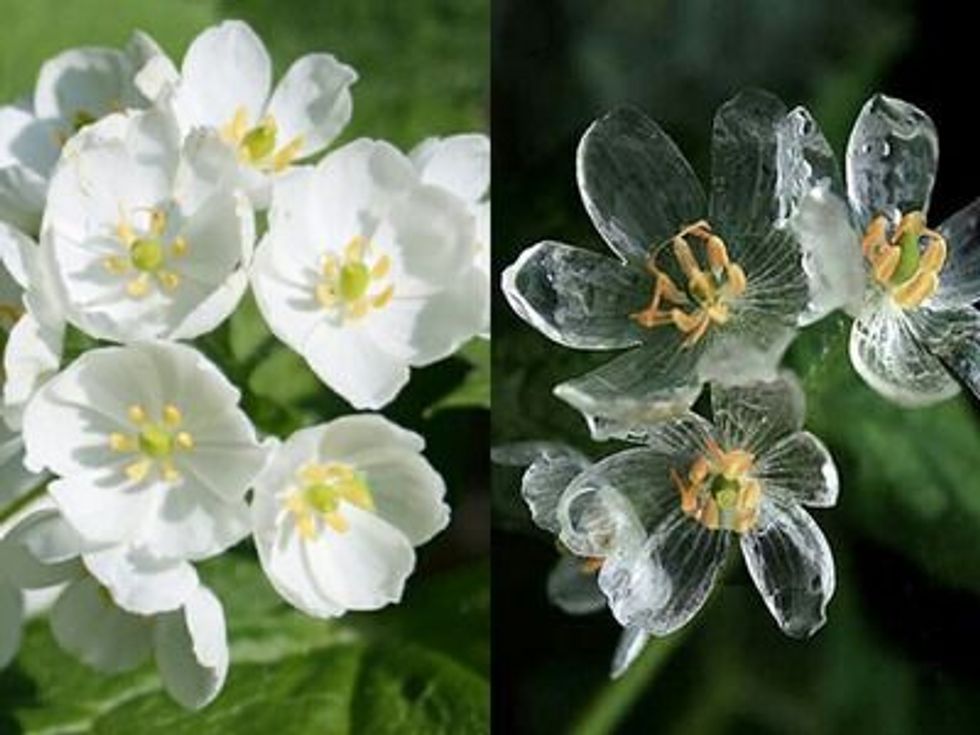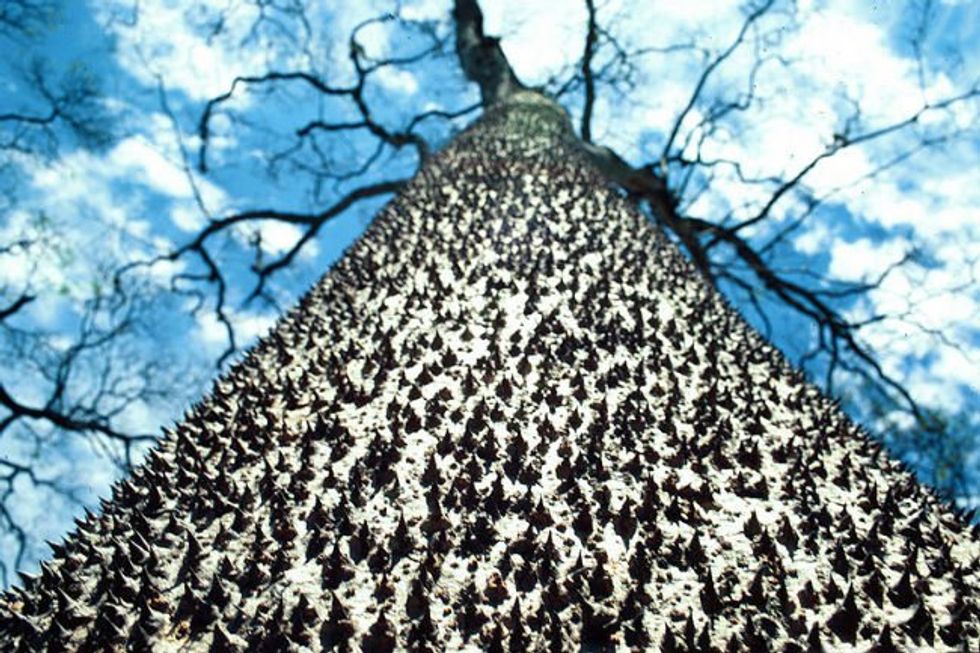When people think of plants they most likely think of mundane trees and flowers. When people think of interesting or weird things in nature, they tend to think about animals. Well leave those notions behind because today I'm going to share 5 plants that are just as bizarre as any animal.
5. Skeleton Flower
Diphylleia grayi, or the skeleton flower, is native to the Appalachian mountain region in the United States and colder mountain regions of eastern Asia. While on the surface it appears to be like any ordinary plant, the skeleton flower is anything but ordinary. When it rains, the petals of the flower will become transparent and take on a crystal like appearance. Why they didn't name it the crystal flower or glass flower is beyond me but maybe those names have already been claimed. Scientist aren't sure why the flower does this or what benefit it provides but it certainly looks cool.
4. Titan Arum
Amorphophallus titanum, or Titan Arum, is found only in the tropical regions of Asia. This plant is also known by the name "corpse flower" or "death flower" due to the horrendous stench it produces when it blooms. This smell is used to attract insects that will act as pollinators for the plant but the smell isn't the weirdest aspect of the Titan Arum however. This peculiar plant requires 7-10 years of vegetative growth before undergoing its initial blooming, after which each individual plant's blooming cycle varies. Groups of botanists and flower enthusiast alike will gather to watch this rare event unfold despite the horrid smell that accompanies it.
3. Sensitive Plant
Mimosa pudica, or the sensitive plant, is native to Central and South America but can be found globally in any tropical region. As you can see from the image above, this plant has the unique ability to retract its leaves when contact is made. Other stimuli that produce this seismonastic movement are warming, blowing and shaking. Again, scientists aren't completely sure what benefit this provides the plant but many speculate it may be a form of defense against animal predation.
4. Sandbox Tree
Hura Crepitans, or the sandbox tree, is a dangerous tree native to South America. The tree gets its name from little bowls made from the tree's fruit that were once used to hold fine, dry sand used for ink blotting. Right off the bat you'll notice the intimidating spikes covering the entirety of its bark but that's the least scary thing about this tree. In order to disperse its seeds, the sandbox tree produces exploding fruit. Once the fruit has matured, the seed capsules explode, sending the seeds shooting out like shrapnel at a speed of 150 mph over a distance of 60 feet. Even the sap of this tree is deadly, historically having been used as poison for poison darts. Basically everything about this tree wants to kill you so I recommend staying as far away from them as you can.
5. Pando
Pando is a large forest found on the western edge of the Colorado Plateau in southern Utah. Except it's not really a forest, but rather a single organism. Wait, how can that be possible? Well it turns out that Pando is what is known as a clonal grove: large regions of forest that all share a single root network. That means all the trees in the grove are genetically identical to each other and reproduce by sending out roots laterally. When conditions are right, it will send up a new stem that looks like a new individual tree. This method of reproduction has allowed Pando to survive for an extremely long time. At least 80,000 years long according to most tree experts, however some believe it could be even older. This makes Pando one of the oldest known organisms on Earth.
























